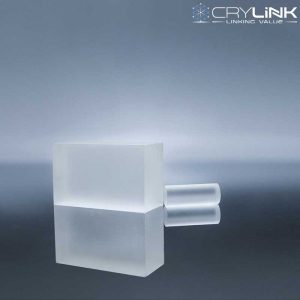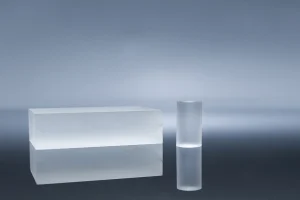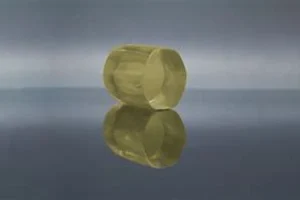BBO crystals are one of the most functional nonlinear optical materials for frequency conversion applications. They can generate ultraviolet, visible, and near-infrared light from numerous laser sources, such as Nd: YAG, Ti: Sapphire, and fiber lasers. BBO crystals have high nonlinear coefficients, a wide variety of transparency, low group-velocity diffusion, and a high damage limit. Nevertheless, producing high-quality BBO crystals calls for cautious control of the crystal development procedure and post-growth therapies.
This write-up will describe how we generate high-quality BBO crystals at our company. We will also review some advantages and difficulties of using BBO crystals for regularity conversion.
What is a BBO crystal?
BBO means beta-barium borate (β-BaB2O4), a birefringent crystal with a trigonal structure. It comes from the 3m factor group with three major axes: X, Y, and Z. The Z-axis is parallel to the optical axis of the crystal as well as is additionally called the terrific axis. The X- and Y-axes are parallel to the optical axis and are called regular axes.
BBO crystals have two refractive indices: ne for extraordinary rays and no for normal rays. The difference between ne and no depends on the wavelength of light and the crystal’s temperature. This distinction triggers phase mismatch between various light polarization parts when propagating through a BBO crystal. Adjusting the angle between the beam and crystal axes can compensate for this phase mismatch.
Second-harmonic generation (SHG), third-harmonic generation (THG), fourth-harmonic generation (FHG), fifth-harmonic generation (5HG), sum-frequency generation (SFG), and difference-frequency generation (DFG) are all possible with BBO crystals due to their large nonlinear coefficients. These processes involve blending 2 or more input beams of light with various frequencies to produce a result beam with a new frequency.
Exactly how Do We Expand BBO Crystals?
We expand BBO crystals utilizing a changed Czochralski approach with a platinum crucible. The raw materials are barium carbonate (BaCO3) and boric acid (H3BO3), mixed in a stoichiometric ratio of 1:2. The mixture is melted at 1100 ℃ in an oxygen atmosphere.
The seed crystal is a little BBO crystal with a distinct positioning along one of its principal axes. The seed crystal is affixed to a turning rod that dips into the thaw surface area. The pole is gradually brought up while revolving at a consistent speed. This triggers a thin thaw layer to strengthen the seed crystal, creating a round boule.
The development price depends upon the temperature gradient, rotation rate, pulling rate, melt makeup, and oxygen pressure. We carefully keep track of these variables during the development procedure to guarantee the uniformity and quality of the boule.
The typical size of our boule is about 50 mm in size and 100 mm in size. After growing, we anneal the boule at 900 ° C for numerous hours to relieve inner stress and anxiety and enhance optical homogeneity.
How Do We Cut and also Polish BBO Crystals?
We reduced our boule into smaller items according to customer specifications using a ruby blade, or cord saw machine. After that, polish these pieces using ruby powder or slurry on cast iron or copper plates.
The cutting angle depends upon the preferred phase-matching problem for frequency conversion applications. Phase matching describes matching the phase speeds of various beams associated with nonlinear processes so that they build up constructively over fars away inside the crystal.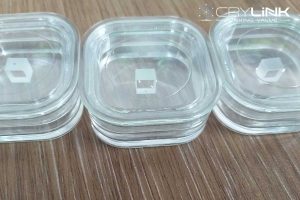
There are two sorts of stage matching: critical stage matching (CPM) and noncritical stage matching (NCPM). CPM occurs when the input beam circulates along one of the major axes of the crystal, such as the Z-axis, and its polarization is vertical to that axis, such as X- or Y-polarized. NCPM occurs when the input beam propagates at an angle other than zero or 90 degrees worrying one of the major axes, such as the Z-axis. Its polarization is parallel to that axis, such as Z-polarized.
For CPM, we cut our pieces at an angle equal to no or 90 levels worrying one of the major axes. For NCPM, we reduced our items at an angle determined by Snell’s regulation:
ni sin(ɵi) = no sin(ɵo) where ni and no are the refractive indices of the input and also result in media, specifically, and ɵi and ɵo are the angles of incidence and refraction, respectively.
We polish our pieces using a fine-grained ruby powder or slurry on a cast iron or copper plate. We apply constant stress and movement to attain a smooth surface area with reduced roughness and high flatness. We also layer our items with anti-reflection layers to decrease representation losses at the crystal surfaces.
The common dimension of our pieces ranges from 1 mm to 25 mm in size or length. The surface quality is better than 10-5 scratch-dig according to the MIL-PRF-13830B criterion. The surface area flatness is far better than lambda/8 at 633 nm wavelength. The parallelism is far better than 10 arc seconds. The clear aperture is larger than 90% of the main location.
What Are the Benefits of Using BBO Crystals?
BBO crystals have many benefits for frequency conversion applications, such as:
- High nonlinear coefficients: BBO crystals have significant nonlinear coefficients that make efficient frequency conversion processes with low input power demands possible. For instance, BBO crystals have a nonlinear coefficient d31 of about 2 pm/V for SHG at 1064 nm wavelength, which is about 10 times larger than KDP crystals.
- Broad openness variety: BBO crystals have a wide openness array from 189 nm to 3500 nm, covering ultraviolet, visible, and near-infrared regions. This allows BBO crystals to be used for numerous laser sources with various wavelengths.
- Low group-velocity diffusion: BBO crystals have reduced group-velocity dispersion (GVD) that minimizes the temporal expansion of ultrashort pulses during frequency conversion procedures. For example, BBO crystals have a GVD specification β2 of about -35 fs2/mm for SHG at 800 nm wavelength, two orders smaller than KDP crystals.
- High damage threshold: BBO crystals have high damage limits that can stand up to their high top and typical power without degradation or damage. For instance, BBO crystals have a damage threshold of 10 GW/cm2 for SHG at 1064 nm wavelength with a 10 ns pulse period, which is 5 times higher than KDP crystals.
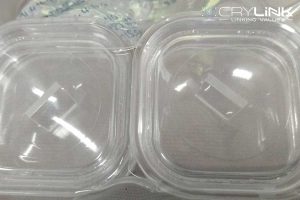
What Are the Challenges of Using BBO Crystals?
BBO crystals also have some obstacles for frequency conversion applications, such as:
- Small acceptance angle: BBO crystals have a small acceptance angle that limits the input light beam’s light beam divergence and top mode quality for effective regularity conversion. For instance, BBO crystals have an acceptance angle of about 0.8 mrad-cm for SHG at 1064 nm wavelength, which is about 4 times smaller than that of KDP crystals.
- Big angular walk-off BBO crystals have a big angular walk-off that triggers spatial splitting between various polarization parts of light when circulating with a BBO crystal. This decreases the effective communication size and also lowers the conversion effectiveness. For example, BBO crystals have an angular walk-off of concerning 38 mrad for SHG at 1064 nm wavelength, which has to do with six times larger than KDP crystals.
- Temperature level sensitivity: BBO crystals temperature sensitivity affects their refractive indices and also phase-matching problems. This needs temperature level stabilizing or tuning tools to keep optimum efficiency. For instance, BBO crystals have a temperature level transmission capacity of 55 ° C-cm for SHG at 1064 nm wavelength, about three times smaller than KDP crystals.
How Do We Evaluate Our BBO Crystal Products?
We examine our BBO crystal items by using various methods, such as:
- X-ray diffraction (XRD): We use XRD to gauge our boules and pieces’ crystal structure and alignment. We ensure our items are pure beta-phase without alpha-phase contamination or twinning problems.
- Optical transmission (OT): We utilize OT to measure the optical passage spectrum of our items over their openness array. We guarantee our products are devoid of absorption bands or scattering losses because of pollutants or problems.
- Second harmonic generation (SHG): We utilize SHG to measure our items’ nonlinear conversion efficiency and phase-matching angle for a given input wavelength. We guarantee that our items fulfil the requirements for SHG applications.
- Third harmonic generation (THG): We use THG to measure our pieces’ nonlinear conversion effectiveness and phase-matching angle for a given input wavelength. We make sure that our products satisfy the specs for THG applications.
- Optical parametric oscillation (OPO): We utilize OPO to determine our items’ nonlinear conversion performance and phase-matching angle for a given input wavelength and signal/idler wavelengths. We make certain that our items meet the requirements for OPO applications.
- Optical parametric amplification (OPA): We use OPA to measure our pieces’ nonlinear conversion performance and phase-matching angle for a provided input wavelength and signal/idler wavelengths. We guarantee that our products meet the specs for OPA applications.
- Optical parametric chirped-pulse amplification (OPCPA): We use OPCPA to determine our items’ nonlinear conversion efficiency as well as phase-matching angle for a given input wavelength and signal/idler wavelengths. We also gauge the enhanced pulses’ temporal pulse shape and spectral transmission capacity. We make sure that our products meet the requirements for OPCPA applications.
What Are Some Examples of BBO Crystal Applications?
BBO crystals have several applications in various areas, such as:
- Laser science: BBO crystals are extensively utilized for frequency conversion processes such as SHG, THG, OPO, OPA, and OPCPA to create ultraviolet, visible, or near-infrared light from various laser sources. For instance, BBO crystals can produce 266 nm light from 1064 nm Nd: YAG lasers or 400 nm light from 800 nm Ti: sapphire lasers.
- Nonlinear optics: BBO crystals are additionally made use of for various other nonlinear optical procedures such as sum-frequency generation (SFG), difference-frequency generation (DFG), optical rectification (OR), electro-optic modulation (EOM), and also Pockels impact. For instance, BBO crystals can create terahertz radiation from OR or modulate laser light beams with EOM.
- Quantum optics: BBO crystals serve for quantum optical experiments such as knotted photon pair generation, quantum state tomography, quantum cryptography, and quantum assessment. For instance, BBO crystals can produce polarization-entangled photon sets from SPDC or perform quantum disturbance dimensions with the Hong-Ou-Mandel result.
How Can I Order Your BBO Crystal Products?
You can purchase our BBO crystal items by contacting us through e-mail or phone. You can also see our website to search our brochure and demand a quote online. We offer competitive prices and fast delivery worldwide. I value your rate of interest in our BBO crystal products!

